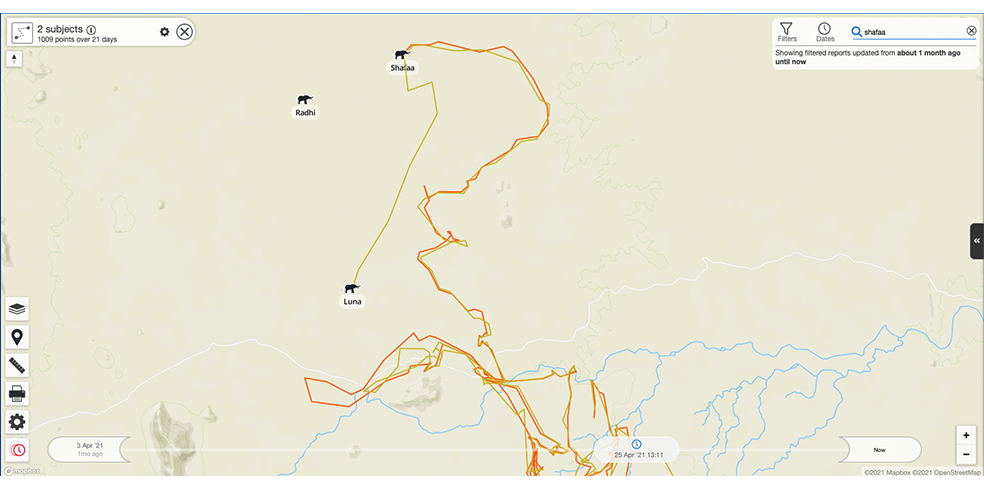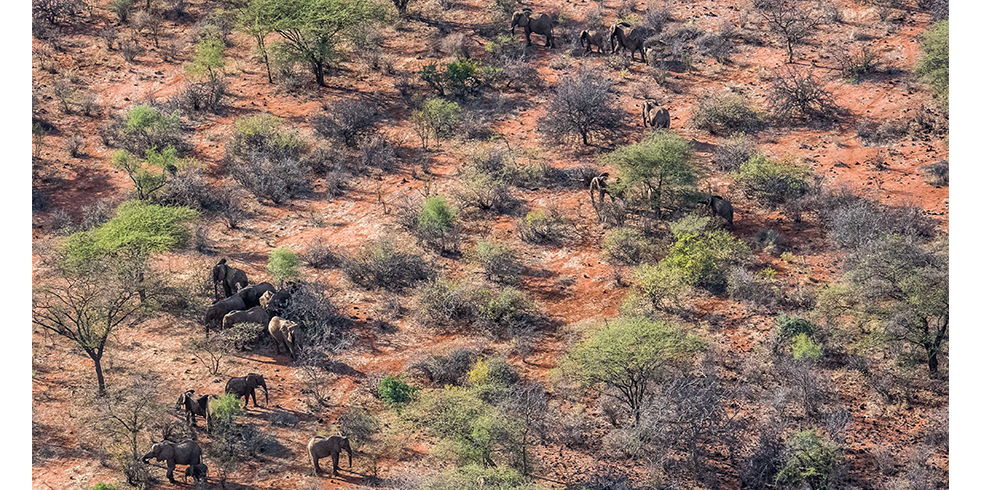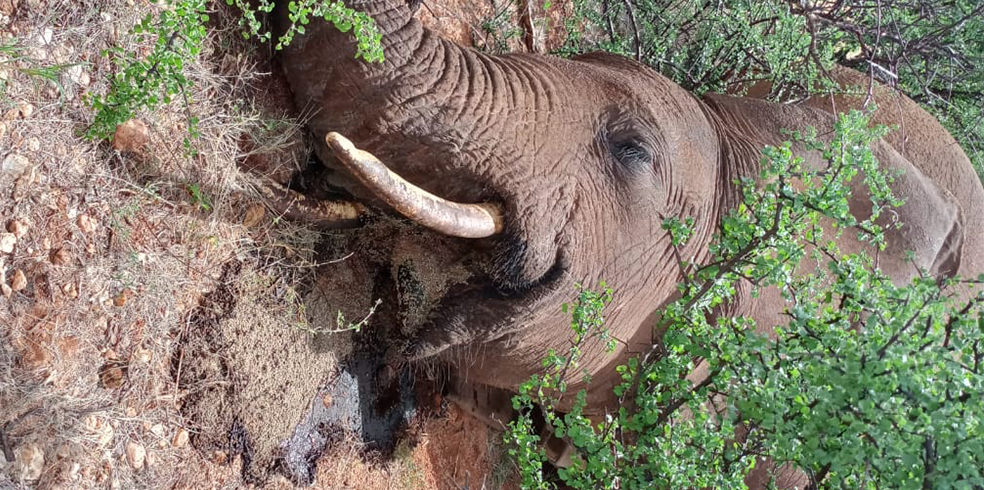A young orphaned elephant who survived the horror of her mother being killed by poachers and eventually gave birth to two calves of her own, has tragically been found dead in northern Kenya. Shafaa (aged 21) was one of eight elephants reported to have been killed in the north over a period of just one week – highlighting just how serious human-elephant conflict has become in the area.
Her death is a blow to our orphan monitoring and research work in northern Kenya, where Shafaa was known for making arduous journeys through dangerous territory with two other orphaned elephants. By tracking her movements we were able to gain valuable insight into how she and other orphans were learning to navigate the landscape on their own without the guidance of their mothers.
On the morning of 25th April, our team received an immobility alert from Shafaa’s tracking collar in Sera Conservancy, some 30 km north of her usual range in Shaba National Reserve. Immobility alerts are electronic warnings sent when a collared elephant stops moving. A team of rangers from Northern Rangelands Trust (NRT) was dispatched, and located her carcass.
Shafaa had been shot multiple times. Her two calves (aged five years and 14 months old) were nowhere to be seen, having most likely run off with the rest of the herd. The chances of survival for Shafaa’s youngest calf are slim as the young male had not yet been weaned from his mother’s milk. The terrain is vast and difficult, but our team are on standby to rescue him should he be found.
Before her life was tragically cut short, Shafaa shared a remarkably close bond with two other orphaned elephants, Orchid and Luna. Despite coming from different families, the trio joined forces after losing their mothers to poachers in 2012. With their new calves in tow, they formed a mini-herd of their own, with Shafaa already showing signs of becoming an exceptional matriarch to the unit before she died. Tracking data revealed that the three friends had last been together on 21st April. Orchid then left, leaving Luna and Shafaa to head north together. Luna was by Shafaa’s side until Shafaa stopped moving on the morning of 25th April.
Mostly living in Shaba National Park, the three young elephants and their calves would leave the safety of the reserve and trek across vast and challenging landscapes, including former poaching hotspots. On several occasions they became disorientated trying to find the entrance to Meru National Park, and spent several days walking in circles – our researchers nervously tracking their every move through GPS co-ordinates from Orchid’s tracking collar.
They eventually made it into the park but their movements suggested that without the knowledge and support of their mother, orphaned elephants were unknowingly risking their lives by venturing into dangerous territory.
Shafaa’s death is an urgent wake-up call. Human populations are rapidly increasing and elephant numbers are on the rise as they re-expand their range following the ivory crisis. But it’s a complex issue that will take time to resolve. Save the Elephants is working on practical solutions for conflict between farmers and crop-raiding elephants. The clash between pastoralist nomads and elephants however is more challenging to understand and manage. STE has established Rapid Response Units and launched investigations in the North in an attempt to learn all we can about the clashes and start to build an alternative mindset among the herders who hold the future of Samburu’s elephants in their hands.
Save the Elephant’s founder and president Iain Douglas-Hamilton says: “While we’ve been delighted to see elephants exploring new territories, we’ve also been anxious for their safety. The death of Shafaa is a harsh reminder that we urgently need an ethic of co-existence if elephants are to have a secure future. Human-elephant conflict is fast becoming the new crisis for elephants across the continent and we need to preserve wild spaces and corridors where elephants can roam freely and safely. Unless humanity cares enough for elephants, we could lose them from landscapes like this altogether.”

This tracking map shows Shafaa and Luna’s movements in the weeks before Shafaa was killed. You can see where the young elephant stopped moving on the morning of April 25.

An aerial photo of Shafaa (top wearing a tracking collar) and Orchid (bottom left) in March 2019. Photo: Jane Wynyard


